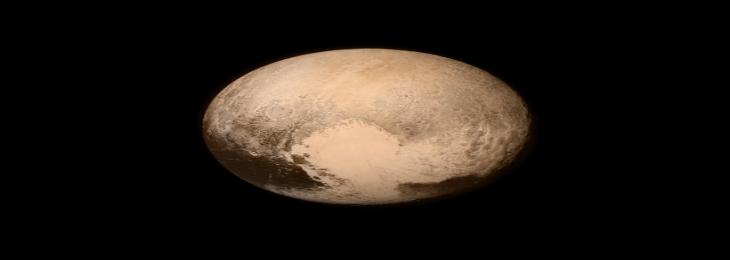Mar, 2021 - By WMR

According to a new study, the blue haze enveloping Pluto could be composed of ice crystals containing cyanide hearts.
The tiny particles of ice, smoke, dust and other substances contained in hazes are not typical to Earth, and are found surrounding other planets such as Venus, Jupiter, Mars and Saturn. Moreover, hazes not only envelop planets, as Titan, Saturn’s largest moon, was found to be shrouded in a thick orange haze akin to the smog seen on Earth. Moreover, the Voyager 2 probe detected haze in Neptune’s largest moon, Triton’s atmosphere. During a fly-by of Pluto in 2015, NASA’s New Horizon mission revealed that the planet is also cloaked by haze. The common factor between Titan, Triton and Pluto is that all three are icy worlds with atmospheres containing plenty of carbon monoxide, methane and nitrogen, and therefore scientists believed that they would possess similar kind of haze.
Research has demonstrated that the haze around Titan is caused by chemical reactions in the upper atmosphere triggered by solar ultraviolet rays. These reactions formed organic compounds which then formed larger and complex organic molecules. Researchers have now found that the origins of hazes around Triton and Pluto are vastly different from Titan’s. Upon analyzing computer representations of haze formation, the team found that the chemical reactions that work on Titan would merely create half of the haze elements on Pluto than previously detected on the dwarf planet. This is owing to Pluto’s atmosphere which is colder than Titan’s by around 80°C, and therefore has a slower atmospheric chemistry.
As far as Triton is concerned, it has an even colder atmosphere compared to Pluto and therefore its hazes would be icier than Pluto and Titan’s. The comparison of the haze formation around Titan, Triton and Pluto highlights the major contrasts in the mechanisms of haze formation planets' atmospheres.

We will be happy to help you find what you need. Please call us or write to us: